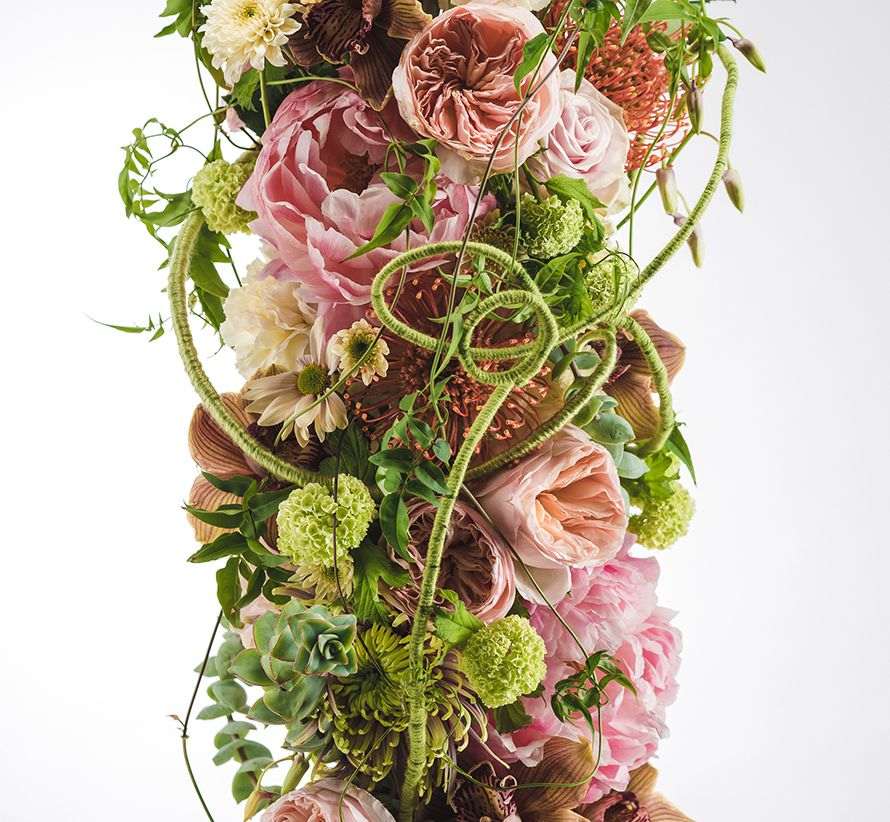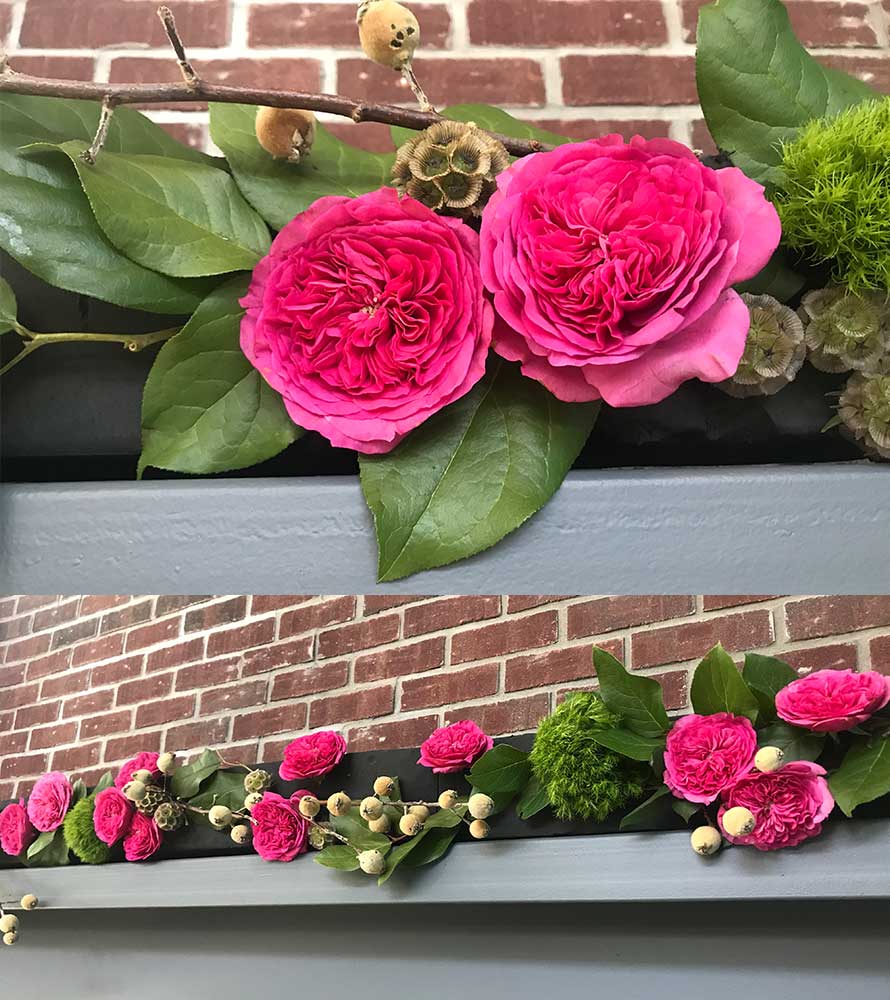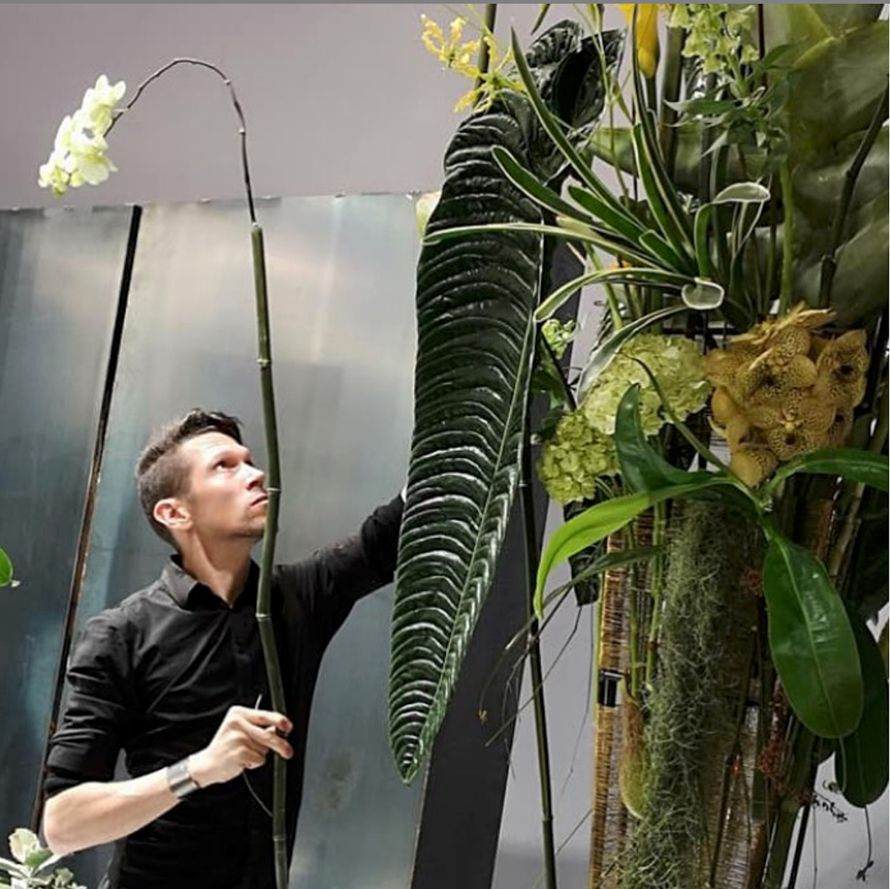
The Mechanics for Trendy Vertical Floral Designs
We’re fascinated with height. There are skyscrapers, sky diving and even the stiletto heel.
Floral and foraged designs are no exception to this fascination. This year vertical arrangements are surging in popularity. Height in floral designs commands attention with the practical benefit of using less surface space.

Just like with buildings and shoes, creating vertical flower designs requires solving mechanical challenges. These include keeping flowers upright, designs from tipping over and providing a water supply.
What different techniques can you use to create vertical designs for Mother’s Day—and weddings, events or any occasion? How can you reduce time and material costs?
And how did Hitomi Gilliam AIFD create her lush vertical designs shown here?
Mechanics and techniques differ
Design techniques for vertical designs can depend on the style you create. We’re focusing in this article on designs that rest on a surface.
How can you create tall arrangements?
- Use tall stems in a secure foam base. For woody stems, use the denser Deluxe MaxLife floral foam.
- Stack foam (see Hitomi’s design below) to create a tower.
- Use tall cylinders as the base or stack a set of foam-filled container to achieve height.
- Create a structure from mesh. Mesh can be spiraled to create height or attached to supports. Your water source from a variety of floral foam shapes or water tubes.
- Place designs on pedestals or other support structures. Mechanics typically used on Lomey pedestals include floral foam blocks, spheres and Lomey dishes.
Hitomi’s elegant towers
Hitomi’s two designs are excellent examples of vertical designs, where elements extend just barely, or not at all, beyond the width of the container.

For this vertical modern mass design, Hitomi built a foam tower with vertical floral and support materials. Flowers were inserted horizontally to offer the full visual value of each bloom.
Hitomi recommends using a tall cement container to anchor the heavy wet foam tower. “The space inside the container surrounding the tower is filled with wet foam wedged tight all around with added river rock,” she adds.
Foundation and support
Here’s how to build a stacked-foam vertical design like Hitomi’s:
- Choose a container large enough to hold water flowing down the foam.
- Position two layers of Styrofoam securely in the bottom of a container for the foundation.
- Cut floral foam bricks into the shape of a square cylinder and stack to make a tower.
- Place plastic sheet between blocks to retain moisture.
- For support, insert into the Styrofoam base on all four sides of the stack any sturdy material such as sticks, branches, bamboo, river cane or acrylic rods vertically and pan-glue.
- Encircle the stacked foam from top to bottom with waterproof floral tape, leaving open space to insert flowers.
- Insert large leaf stems into the base foam and lay them vertically against the taped foam to cover mechanics and add texture.
- Place any stiff foliage spines against the corners of the foam structure clear of insertions.
- To help secure decorative materials in place, wrap bullion around the foam structure.
- Fill in with flowers. Stems can be inserted through the leaves into the foam.
Upscale your design by stacking more blocks of foam.
Downside by adding randomly spaced smaller foams to a base structure like mesh. Visually connect these with floral materials.
A tower from mesh

This awesome Hitomi vertical arrangement features water tubes on floral wire mesh.
The benefits of this vertical structure? Mesh allows for a less dense and lighter weight design requiring fewer flowers. Spacing flowers farther apart in glass tubes creates even more transparency.
Stabilizing rods or floral materials can be positioned inside and outside and lashed to the container wall.
Budget-friendly vertical designs

If flower-filled vertical designs like Hitomi’s above are too expensive for a client, you have options. A simpler vertical design using the natural height of your flowers allows you to create higher perceived value with fewer stems.

The flowers in this arrangement visually move upward from the container in a static line. The dynamic lines of curving curly willow are added in juxtaposition, creating visual drama with lively lines.
If the size or number of stems seems excessive for the amount of floral foam, add florist netting over the foam and tape in place.
Create a cohesive design

This design is visibly cohesive because it exhibits unity and harmony.
One unifying element is texture from the materials, creating richness. The visual harmony comes from combining the tactile qualities of rough versus smooth, small versus large, tall versus compact, thin versus wide and so on.
To anchor thick and woody stems securely in foam, cut them at a sharp angle on both sides, like the point of an arrow.
Mother’s Day Special
In recent years compact and massed flower designs have been popular. Vertical designs please those consumers looking for something different.
As you plan your Mother’s Day (and other occasions) sales menu, add vertical designs to your collection.
Whether bountiful or budget-conscious, these high-style designs can elevate your sales to new heights.
Which style of vertical designs do you think your clientele will prefer?



2 comments
Thanks! We welcome your comments!!
Sharon McGukin
Thanks for sharing the info Sharon!
[email protected]
Leave a comment
This site is protected by hCaptcha and the hCaptcha Privacy Policy and Terms of Service apply.